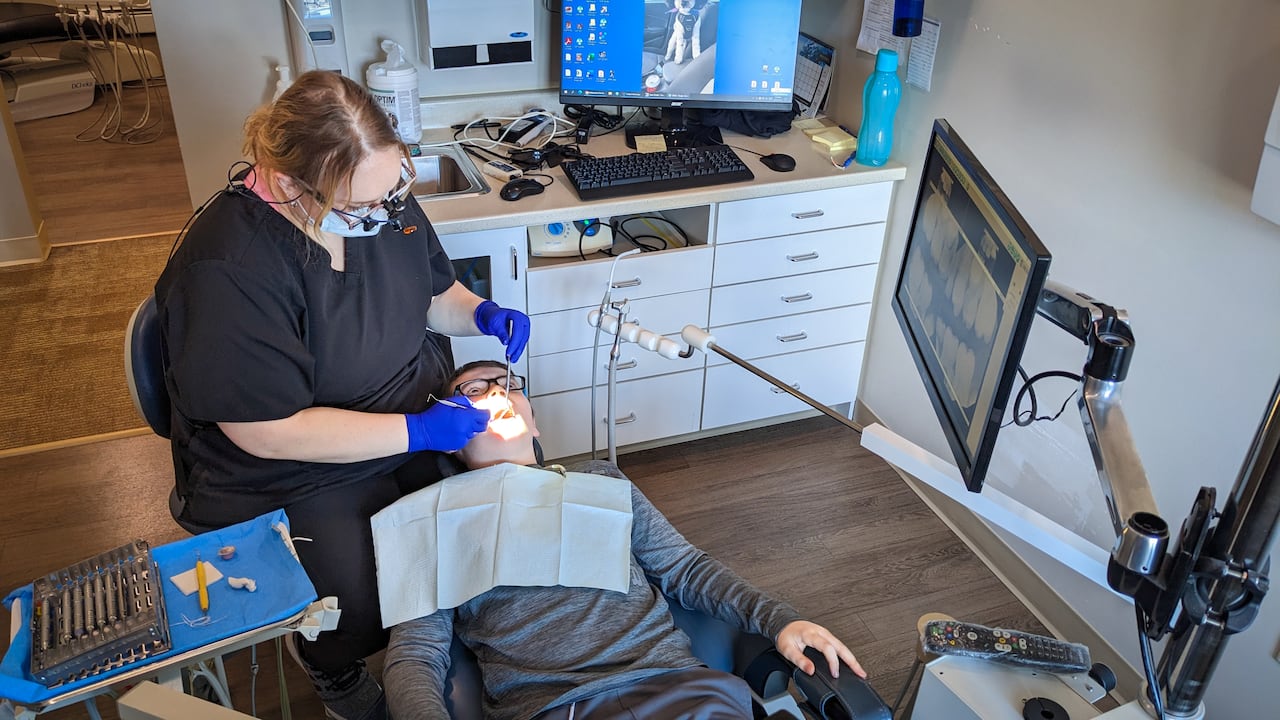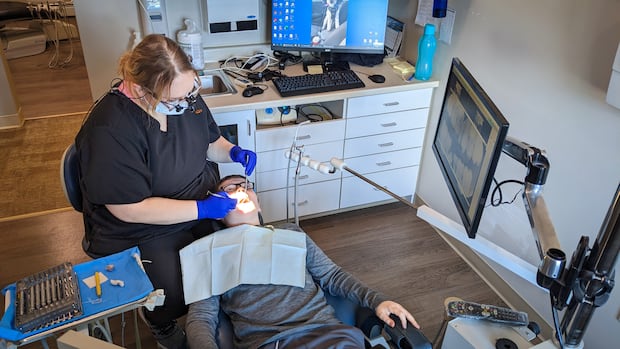Health Canada is touting the major uptake of its public dental insurance program, but data shows that nearly half of the 5.2 million eligible patients have yet to see a dentist.
Of the Canadians approved for coverage, 2.8 million have been to a dental clinic, Health Canada says. And to date, those visits have cost taxpayers $3.37 billion.
The new data comes six months after the Canadian Dental Care Plan expanded significantly to cover 18- to 64-year-olds. So far, 1.8 million people in this newest cohort are approved for the plan. A quarter of them have actually used it so far.
Health Minister Marjorie Michel says having people enrolled is the first step.
“It’s still a new program,” Michel said Thursday at a news conference at a community centre in Ottawa. “To have people enrolled in the program is key for them to have the opportunity to go.”
“It’s like, you can go to your doctor, and you don’t feel the need to go tomorrow morning, but you still can go to the doctor. It’s just the same.”
Health Minister Marjorie Michel, speaking on Thursday in Ottawa, said the fact that more than five million people have been accepted into the federal dental care program is good news because the program is available for them, even if many haven’t seen an oral health provider.
Dental care program ‘a work in progress’: minister
Health Canada also now says close to 100 per cent of active dentists, denturists and independent dental hygienists are treating patients through the program. It’s a significant milestone considering initial uptake from dentists was low.
The national insurance program subsidizes the cost of dental care for Canadian residents with a family net income below $90,000 if they don’t have access to a private insurance plan.
The program helps pay for a range of dental work, including cleanings, fillings and dentures. Health Canada says that on average, each patient has had $800 in expenses covered per year.
Dental clinics can also “balance bill,” meaning they can charge more than what the federal government covers, requiring the patient to pay the difference.
Some patients have raised concerns about this practice, saying it enables a dental office to charge whatever they want for the procedure.
Asked whether she would consider restricting what oral health-care providers can bill patients for, Michel said her office is “monitoring very closely how fees are applied to patients.”
“My department is working closely also with the providers to make sure that we can understand the cost, why the costs are applied, and we will improve within time,” she said. “But it’s still a work in progress.”

Dental backlogs in some regions
Dr. Bruce Ward, president of the Canadian Dental Association, says balance billing is common in private insurance plans, and it’s one of the reasons most clinics are now on board with treating patients through the public program.
“To restrict the amount that dentists can charge for any given procedure would make things more difficult for the dental offices and therefore [put] more roadblocks in the way of everybody participating,” Ward said.
He also says there are other common reasons why some patients who now have coverage aren’t using it to rush out to see a dentist.
“A lot of people really don’t like going. And they’ll avoid it at all costs until something causes them to want to go to see the dentist,” Ward said, noting there have been backlogs in some parts of the country from the influx of patients seeking dental care, some of whom hadn’t seen a dentist in a long time.
The Canadian Dental Care Plan began in May 2024 for seniors, then children and Canadians who received the disability tax credit. In May 2025, it expanded to all eligible Canadians.
The massive, multibillion-dollar public insurance program was brought in as a result of the NDP, which propped up the previous Trudeau Liberal minority government for two years in the House of Commons in return for major social programs like dental care.
link








More Stories
Designing and psychometric evaluation of an Instrument to assess patient’s satisfaction from communication with dentist and dental care services based on SERVQUAL model | BMC Oral Health
From classroom to community: The power of dental hygiene volunteerism
University of Manitoba to offer free dental care for CDCP and uninsured patients after grant